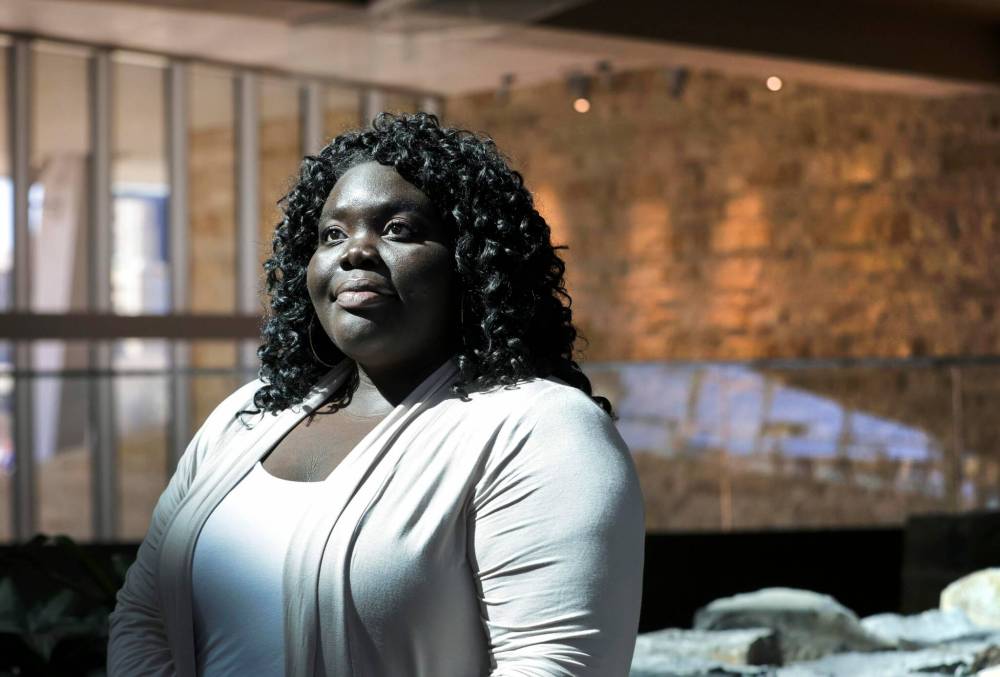CMHR teacher-in-residence creates anti-racism guide for educators, students
Advertisement
Read this article for free:
or
Already have an account? Log in here »
To continue reading, please subscribe:
Monthly Digital Subscription
$0 for the first 4 weeks*
- Enjoy unlimited reading on winnipegfreepress.com
- Read the E-Edition, our digital replica newspaper
- Access News Break, our award-winning app
- Play interactive puzzles
*No charge for 4 weeks then price increases to the regular rate of $19.00 plus GST every four weeks. Offer available to new and qualified returning subscribers only. Cancel any time.
Monthly Digital Subscription
$4.75/week*
- Enjoy unlimited reading on winnipegfreepress.com
- Read the E-Edition, our digital replica newspaper
- Access News Break, our award-winning app
- Play interactive puzzles
*Billed as $19 plus GST every four weeks. Cancel any time.
To continue reading, please subscribe:
Add Free Press access to your Brandon Sun subscription for only an additional
$1 for the first 4 weeks*
*Your next subscription payment will increase by $1.00 and you will be charged $16.99 plus GST for four weeks. After four weeks, your payment will increase to $23.99 plus GST every four weeks.
Read unlimited articles for free today:
or
Already have an account? Log in here »
Hey there, time traveller!
This article was published 18/04/2023 (962 days ago), so information in it may no longer be current.
Teachers unsure about how-to start embedding anti-racism into their lesson plans need look no further than the Canadian Museum for Human Rights’ latest project.
Sarah Adomako-Ansah, the museum’s current teacher-in-residence, has spent the better part of the last two years creating Pass the Mic: Let’s Talk About Racism.
The free teaching guide, which is being rolled out with educational tours for all ages, serves as a starting point for educators who are hesitant about bringing up topics ranging from microaggressions to allyship.

RUTH BONNEVILLE / WINNIPEG FREE PRESS
Sarah Adomako-Ansah, the Canadian Museum for Human Rights’ current teacher-in-residence, has spent the better part of the last two years creating Pass the Mic: Let’s Talk About Racism.
“‘What is your relationship with racism?’ It’s such a weird question, but it’s one that, I think, needs to be explored because whether we like it or not, whether we want to admit it or not, we all have a relationship with racism,” said Adomako-Ansah, who is based out of Edmonton, where she taught Grade 6.
“Some of us have benefited from it, and some of us are on the other end of it, where there’s all sorts of harm that comes from it.”
Adomako-Ansah said classroom teachers have a responsibility to support students as they learn about the world around them and it is inevitable that learners are exposed to racism — through personal experience, social media, altercations at recess or all of the above.
At the same time, she indicated she often hears from teachers who are intimidated about having frank conversations about race in their classrooms.
When she was named teacher-in-residence — not long after disturbing video footage of a white police officer killing George Floyd in Minneapolis sparked global unrest in 2020 — she made it her mission to equip colleagues with the know-how and confidence to create safer schools for racialized students.
Her capstone project features videos featuring three Canadians — Edmonton Olympic bobsledder Dawn Richardson Wilson, Yukon bhangra artist Gurdeep Pandher and Montreal drag performer Dimitri Nana-Côté, all of whom she recruited — speaking about their lives and first-hand experiences with biases and stereotypes.
“I wanted students to be able to see themselves in many of these different identities that these three individuals hold,” the creator said, noting she wants listeners to learn the toll of seemingly innocent microaggressions, such as asking a person of colour if they can tan.
Complementary lesson plans and assignments provide ideas on how to discuss privilege, intersectionality and other topics related to anti-racism in classrooms.
The bilingual documents were designed with middle years in mind, although they can be adjusted up or down to meet students at whatever level they are in between kindergarten and Grade 12.
“Students will understand what it means to pass the microphone to others,” states an excerpt from the virtual cross-curricular resource.
For Adomako-Ansah, co-founder of Alberta’s Black Teachers, passing the microphone means listening to marginalized voices, practising empathy and thinking about what it means to be an ally.
There’s a gap in academic resources on the subjects, she said, adding she hopes this project will spark the creation of more related resources so anti-racist education is the default education students receive going forward.
Adomako-Ansah’s stint as teacher-in-residence comes to a close at the end of the school year.
The museum recently started accepting applications from candidates interested in the next two-year term, starting in September. Teachers from anywhere in Canada are eligible for the remote role.
maggie.macintosh@freepress.mb.ca
Twitter: @macintoshmaggie

Maggie Macintosh
Education reporter
Maggie Macintosh reports on education for the Free Press. Originally from Hamilton, Ont., she first reported for the Free Press in 2017. Read more about Maggie.
Funding for the Free Press education reporter comes from the Government of Canada through the Local Journalism Initiative.
Every piece of reporting Maggie produces is reviewed by an editing team before it is posted online or published in print — part of the Free Press‘s tradition, since 1872, of producing reliable independent journalism. Read more about Free Press’s history and mandate, and learn how our newsroom operates.
Our newsroom depends on a growing audience of readers to power our journalism. If you are not a paid reader, please consider becoming a subscriber.
Our newsroom depends on its audience of readers to power our journalism. Thank you for your support.






